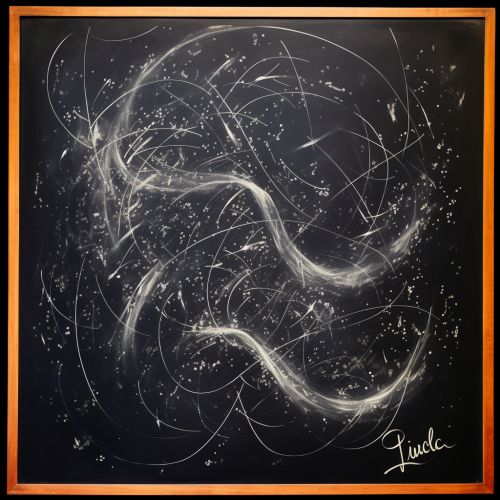Dirac equation
Introduction
The Dirac equation is a relativistic quantum mechanical wave equation formulated by British physicist Paul Dirac in 1928. It provides a description of elementary spin-½ particles, such as electrons, consistent with both the principles of quantum mechanics and the theory of special relativity. The equation demands the existence of antiparticles and actually predated their experimental discovery, making the discovery of the positron, the antiparticle of the electron, one of the greatest triumphs of theoretical physics.


Historical Context
The Dirac equation emerged from Dirac's efforts to reconcile the seemingly incompatible concepts of quantum mechanics and special relativity. Quantum mechanics is a framework for the development of physical theories proposed by Max Planck and later developed by many others. On the other hand, special relativity is a theory of spacetime and motion proposed by Albert Einstein. The Dirac equation is a unification of these two theories and has been a cornerstone in the development of quantum field theory, which is a framework for constructing quantum mechanical theories of particle physics.
Mathematical Formulation
The Dirac equation in the form originally proposed by Dirac is:
(iℏ∂_t - mc^2)ψ = 0
where ψ is the wave function for the electron of mass m and charge -e, c is the speed of light, and i is the imaginary unit. The wave function ψ is a four-component spinor-valued function of the spacetime coordinates. The equation is manifestly relativistic, i.e., it respects the principles of special relativity.
Properties and Implications
The Dirac equation has, as its mathematical solutions, both a positive energy component and a negative energy component. The positive energy solution can be interpreted as a particle (such as an electron) moving forwards in time. The negative energy solution was initially interpreted by Dirac as a particle moving backwards in time. However, this interpretation was later replaced by the introduction of the concept of antiparticles.
The Dirac equation also implies the existence of a new form of the electron, the positron, with the same mass but opposite charge. This was a startling prediction at the time, as no such particle had been observed. The positron was discovered by Carl Anderson in 1932, four years after Dirac's prediction, confirming the equation's validity.
Antiparticles and the Dirac Sea
The Dirac equation led to the prediction of antiparticles, counterparts to ordinary particles but with opposite charges. This was a revolutionary concept and marked a significant development in theoretical physics. The existence of antiparticles was confirmed with the discovery of the positron, or anti-electron, by Carl Anderson in 1932.
Dirac initially interpreted the negative energy solutions of his equation as electrons moving backwards in time. However, he later proposed a more physically acceptable interpretation, now known as the Dirac sea. In this interpretation, a "sea" of negative energy states are filled with electrons. The absence of an electron in one of these states leads to a hole, which appears as a positive energy electron, or a positron.
Quantum Field Theory and the Dirac Equation
The Dirac equation plays a crucial role in quantum field theory, a framework for constructing quantum mechanical theories of particle physics. The equation is used to describe particles of spin-½, and its solutions can be used to calculate the probabilities of different outcomes in particle interactions. The Dirac equation also forms the basis for the theory of quantum electrodynamics, which describes the interactions between charged particles and the electromagnetic field.
Conclusion
The Dirac equation has had a profound impact on the development of theoretical physics. It has led to the prediction and discovery of antiparticles, provided a deeper understanding of quantum mechanics and special relativity, and has been instrumental in the development of quantum field theory. Despite its complexity, the Dirac equation remains one of the most important equations in the field of particle physics.
